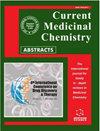Self-assembling Peptides in Current Nanomedicine: Versatile Nanomaterials for Drug Delivery.
IF 3.5
4区 医学
Q2 BIOCHEMISTRY & MOLECULAR BIOLOGY
引用次数: 15
Abstract
BACKGROUND The development of modern nanomedicine greatly relies on the involvement of novel materials as drug delivery system. In order to maximize the therapeutic effects of drugs and minimize their side effects, many kinds of natural or synthetic materials have been widely investigated for drug delivery. Among these materials, biomimetic self-assembling peptides (SAPs) have received more and more attentions in recent years. Considering the rapidly growing number of SAPs designed for drug delivery, a summary of how SAPs-based drug delivery systems were designed would be beneficial. METHOD We overviewed research works on different SAPs that have been investigated as carriers for different drugs, focusing on the design of SAPs nanomaterials and how they were used for drug delivery in different strategies. RESULTS Based on the principle rules of chemical complementarity and structural compatibility, SAPs such as ionic self-complementary peptide, peptide amphiphile and surfactant-like peptide could be designed. Determined by the features of peptide materials and the drugs to be delivered, different strategies such as hydrogel embedding, hydrophobic interaction, electrostatic interaction, covalent conjugation or the combination of them could be employed to fabricate SAPs-drug complex, which could achieve slow release, targeted or environment-responsive delivery of drugs. Furthermore, some SAPs could also be combined with other types of materials for drug delivery, or even act as drug by themselves. CONCLUSION Various types of SAPs have been designed and used for drug delivery following various strategies, suggesting that SAPs as a category of versatile nanomaterials have promising potential in the field of nanomedicine.当前纳米医学中的自组装肽:用于药物传递的多功能纳米材料。
现代纳米医学的发展在很大程度上依赖于新型材料作为给药系统的参与。为了使药物的治疗效果最大化,使其副作用最小化,许多种类的天然或合成材料被广泛研究用于给药。其中,仿生自组装肽(SAPs)近年来受到越来越多的关注。考虑到为药物递送设计的sap数量迅速增长,总结基于sap的药物递送系统是如何设计的将是有益的。方法综述了不同SAPs作为不同药物载体的研究工作,重点介绍了SAPs纳米材料的设计以及它们如何以不同的策略用于药物递送。结果根据化学互补和结构相容性的基本规律,可以设计出离子自互补肽、肽亲两性肽和表面活性剂样肽。根据多肽材料和被递送药物的特性,可以采用水凝胶包埋、疏水相互作用、静电相互作用、共价偶联或三者联合等不同的策略制备sap -药物复合物,从而实现药物的缓释、靶向或环境响应递送。此外,一些sap还可以与其他类型的材料结合用于给药,甚至可以单独作为药物。结论SAPs作为一种多用途纳米材料,在纳米医学领域具有广阔的应用前景。
本文章由计算机程序翻译,如有差异,请以英文原文为准。
求助全文
约1分钟内获得全文
求助全文
来源期刊

Current medicinal chemistry
医学-生化与分子生物学
CiteScore
8.60
自引率
2.40%
发文量
468
审稿时长
3 months
期刊介绍:
Aims & Scope
Current Medicinal Chemistry covers all the latest and outstanding developments in medicinal chemistry and rational drug design. Each issue contains a series of timely in-depth reviews and guest edited thematic issues written by leaders in the field covering a range of the current topics in medicinal chemistry. The journal also publishes reviews on recent patents. Current Medicinal Chemistry is an essential journal for every medicinal chemist who wishes to be kept informed and up-to-date with the latest and most important developments.
 求助内容:
求助内容: 应助结果提醒方式:
应助结果提醒方式:


